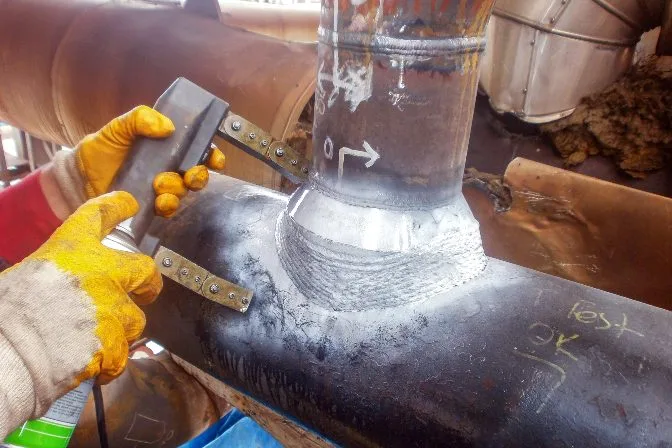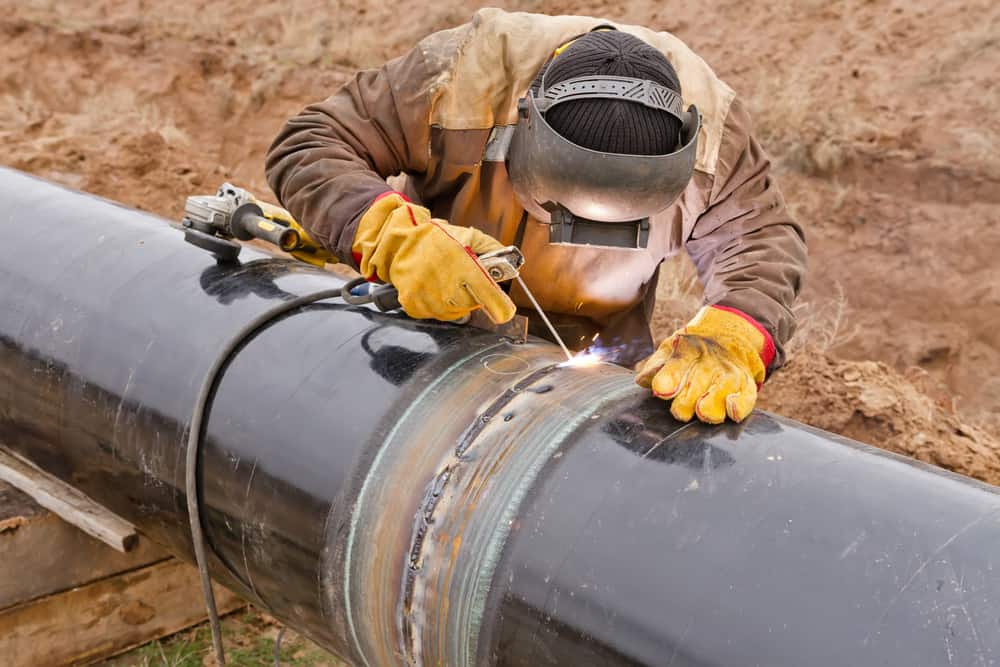Qualified Houston Welding Inspection Professionals for High-Quality Assessments
Qualified Houston Welding Inspection Professionals for High-Quality Assessments
Blog Article
A Comprehensive Overview to Understanding Just How Welding Assessment Works: Techniques, Standards, and Ideal Practices for Quality Control in Metal Fabrication
Understanding the ins and outs of welding inspection is important for maintaining the integrity of metal construction. Carrying out finest techniques can substantially enhance top quality guarantee steps. The landscape of welding evaluation is not without its difficulties.
Value of Welding Assessment
Although welding is an important process in numerous markets, its integrity straight affects the safety and security and efficiency of parts and structures. Effective welding assessment is essential for recognizing defects that could jeopardize the high quality and resilience of welded joints. This process guarantees adherence to developed requirements and specifications, which are essential for keeping structural integrity and functional reliability.
Welding inspection offers numerous purposes, consisting of validating that the welding procedure has been implemented correctly, evaluating the quality of materials made use of, and verifying that the ended up item meets governing and sector standards (Houston Welding Inspection). With strenuous evaluation, potential issues such as porosity, cracks, and incomplete fusion can be found early, reducing and stopping pricey repair services safety and security threats
Moreover, consistent welding inspections foster confidence among stakeholders, including designers, clients, and governing bodies, by showing a commitment to high quality assurance. The importance of welding inspection can not be overstated; it is essential not only for compliance with legal needs but likewise for boosting the total efficiency of welded frameworks. Eventually, a durable welding inspection program is a proactive measure that safeguards versus failings, making certain the long life and reliability of bonded parts in their designated applications.
Usual Welding Assessment Methods

Visual inspection is the very first line of defense, permitting examiners to recognize surface area issues such as cracks, undercuts, or insufficient fusion. Radiographic testing makes use of X-rays or gamma rays to disclose inner problems, making it optimal for complex welds. Ultrasonic screening uses high-frequency sound waves to identify subsurface defects, supplying accurate dimensions of weld integrity.
Magnetic particle testing is reliable for ferromagnetic products, highlighting surface and near-surface interruptions when bits are put on an electromagnetic field. Conversely, dye penetrant testing makes use of a fluid color to expose surface-breaking defects, making sure that even the smallest imperfections are found.
Each strategy has its constraints and strengths, frequently requiring a combination of approaches for thorough evaluation - Houston Welding Inspection. By applying these examination methods, quality control in metal fabrication is achieved, making sure that bonded structures meet safety and performance criteria
Sector Standards for Welding

The American Welding Culture (AWS) and the American National Requirement Institute (ANSI) are two popular companies that establish welding standards. AWS D1.1, as an example, describes the requirements for welding steel structures, while AWS D1.2 concentrates on light weight aluminum. Worldwide, the ISO 3834 standard addresses quality needs for blend welding, giving a structure appropriate across nationwide borders.

Ideal Practices for Quality Control
Quality guarantee in welding is extremely important to achieving secure and sturdy buildings. Establishing a thorough top quality monitoring system (QMS) customized to the specific welding project is essential.
Regular training and certification of welding personnel are important for preserving a skilled workforce. Continuous education on the most recent welding methods and technologies makes sure that inspectors and welders are knowledgeable about existing requirements and practices.
In addition, performing pre-weld assessments to review materials and tools can stop problems prior to they happen. Houston Welding Inspection. Throughout the welding process, real-time tracking and paperwork of welding criteria help recognize inconsistencies quickly. Post-weld evaluations need to entail detailed assessments making use of non-destructive testing (NDT) methods to make sure the stability of the welds
Additionally, maintaining clear communication amongst staff member visit here advertises a click here now society of high quality. Routine audits and reviews of the welding process assistance identify areas for enhancement. By adhering to these finest practices, organizations can achieve optimum top quality guarantee, inevitably resulting in improved safety and performance in steel construction tasks.
Obstacles in Welding Assessment
Although welding examination is important for making certain architectural integrity, it offers a range of difficulties that can complicate the evaluation procedure. One significant challenge is the irregularity in welding strategies and materials utilized, which can influence the uniformity of weld high quality. Various welders might utilize varying approaches, causing inconsistencies that inspectors need to review and identify.
One more challenge involves the discovery of issues. Non-destructive testing (NDT) methods, such as radiographic and ultrasonic screening, can be intricate and require proficient technicians to analyze outcomes accurately. Incorrect positives or downsides can occur, possibly resulting in costly rework or compromised security.
In addition, the existence of ecological variables, such as temperature and humidity, can affect the stability of welds and the performance of inspection techniques. Inspectors have to likewise navigate the governing landscape, making sure conformity with industry criteria, which can differ by territory and application.
Conclusion
In verdict, welding assessment plays a crucial function in guaranteeing the integrity and safety of metal construction. Utilizing a selection of examination strategies, sticking to well-known sector requirements, and implementing reliable high quality monitoring practices collectively improve the dependability of bonded frameworks. Despite the obstacles dealt with in the inspection procedure, a dedication to constant renovation and adherence to finest techniques can significantly strengthen the quality control structure, fostering greater self-confidence among stakeholders in the welding industry.
Effective welding inspection is vital for recognizing issues that could jeopardize the top quality and longevity of welded joints.Furthermore, regular welding examinations foster confidence amongst stakeholders, consisting of engineers, customers, and regulative bodies, by showing a dedication to quality guarantee.The American Welding Society (AWS) and the American National Requirement Institute (ANSI) are 2 prominent organizations that develop welding standards. Throughout the welding procedure, real-time monitoring and documentation of welding criteria assist determine variances quickly. Despite the difficulties encountered in the assessment procedure, a dedication to constant improvement and adherence to ideal techniques can dramatically strengthen the quality assurance structure, fostering greater confidence among stakeholders in the welding sector.
Report this page